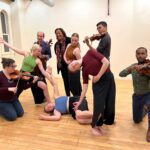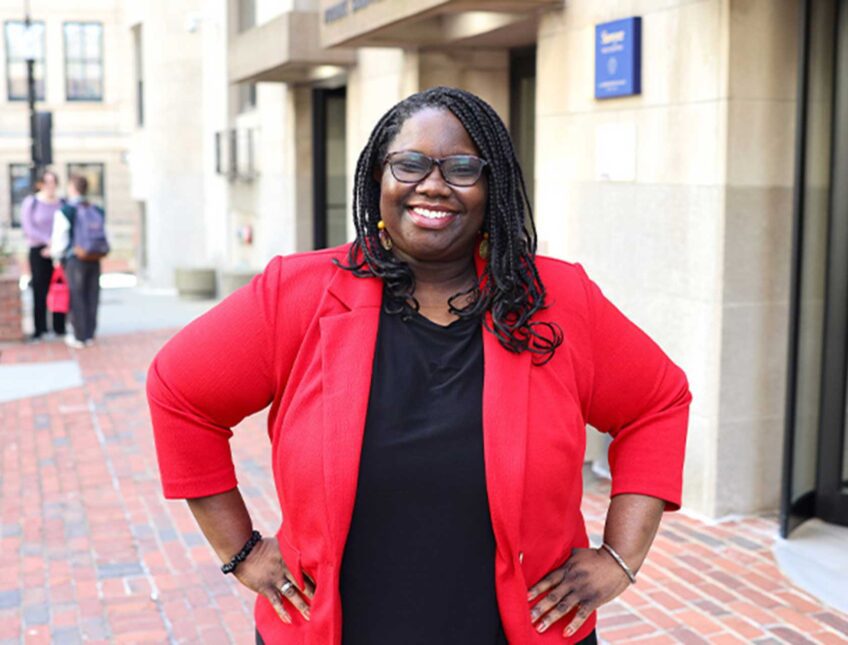City’s racial makeup at risk in housing market
Loan access disparities & high prices fuel push out
Ten years ago, when first-time home-buyers of modest means came to the Massachusetts Affordable Housing Alliance for mortgages, nearly a third of the mostly black and Latino buyers were able to find homes in the city.
Today, says MAHA Executive Director Tom Callahan, only 10 percent do.
That reduction in the number of buyers finding homes in Boston reflects a wider trend of increasing prices, stagnating wages and displacement. Add to that a recently-released report finding that blacks and Latinos are consistently denied mortgages at rates substantially higher than whites.
If the lack of access to mortgages continues, it could reshape the racial makeup of Boston, Callahan said.
“If left unchecked over a generation that [trend] could totally change the demographics of the city,” Callahan told the Banner.
Priced out
To afford a one-family condo in Boston during the first quarter of 2016, on average, a family would need an income of $116,200, according to city’s quarterly report on housing. Meanwhile, the people receiving city assistance to purchase homes last quarter averaged an income of $66,003. As a result, many of these homebuyers turned to units deed restrictions to below-market prices. Two years ago, 48 percent of city-assisted buyers purchased below-market deed-restricted units. Last year, 63 percent did.
MAHA offers mortgages to first-time homebuyers with household assets of not more than $75,000 and income not more than 100 percent of the area median income (no more than $98,100 for a family of four). Callahan said that a decade ago, 30 percent of these mortgage loans went to buying in Boston but now only 10 percent do.
“That’s the most dramatic indication we have, other than anecdotal stories, that people are really being priced out of the city,” he said.
Many attendees at the Massachusetts Affordable Housing Alliance’s homebuying classes, Callahan said, are residents of Dorchester, Mattapan, Hyde Park and Roxbury supporting a family of four on household incomes of $40,000 to 90,000. Unable to afford to stay in the city, many instead are turning to areas like Brockton.
“If you’re in that income bracket in Boston, you’re struggling to be able to afford to buy a house anywhere in the city,” Callahan said. “The lower end of that range is pretty much priced out of the city completely. The higher end may occasionally be able to buy.”
Racial lending gaps
Not only are housing prices rising, but blacks and Latinos tend to have less access to loans, according the latest report prepared for the Massachusetts Community & Banking Council by Jim Campen, professor emeritus of economics at University of Massachusetts-Boston. The findings reveal that, although blacks comprised 21 percent of Boston households in 2014, they received only 5.6 percent of all home-purchase loans. Latinos — comprising 13.7 percent of Boston households — received only 4.8 percent. These numbers reflect all loans, including conventional loans and the often more expensive government-backed loans. GBLs are made by private lenders and insured or guaranteed by a federal agency. While whites compromised only 4.8 percent of Bostonians receiving GBLs, Latinos’ share was 22.8 percent and blacks’ 39.5 percent, suggesting the latter groups had fewer other options. In Boston, Greater Boston and across the state, blacks and Latinos also were denied conventional loans far more often than whites, regardless of income, the MCBC report states.
The situation has been getting worse. In Boston and Greater Boston the share of home-purchase loans of any kind going to blacks and Latinos declined between 2004 and 2014, according to the MCBC report. Across that decade, black Bostonians’ share of loans more than halved.
City effort
Recent efforts by the city provide some relief. During the first quarter of 2016, the city provided financial assistance to 51 middle-class individuals to purchase their first homes. Those homebuyers were largely from underserved populations, with 83 percent of them nonwhite, according to the city’s quarterly report.
Minorities have been proportionally overrepresented in the city’s homebuyer assistance programs this fiscal year, although those programs are of limited size. According to data supplied to the Banner by the Department of Neighborhood Development, since July 2015 the city has served 99 homebuyers, 34 percent of whom were white, 33 percent black and 23 percent Latino. In comparison, the city population is 54 percent white, 24 percent black and 17.5 percent Latino, according to the 2010 census.
During fiscal year 2016, the city primarily provided assistance to local residents buying in the city. Most of the buyers identified themselves as from Dorchester (27 percent) or simply Boston (22 percent), followed by Hyde Park (10 percent) and Mattapan at 6 percent. These homebuyers secured units primarily in Dorchester (25 percent), Mattapan (20 percent), Hyde Park (15 percent) and Roxbury (11 percent), according to information provided by the DND.
The city hit only 62 percent of its goal for assisted first-time home purchases during the first quarter of 2016. The city housing report stated that the right audience is being reached but more progress must be made: “The city is reaching the most priced out segment of buyers, and is reaching the most underserved markets. Scaling up these outcomes is the key challenge going forward.”

![Banner [Virtual] Art Gallery](https://baystatebanner.com/wp-content/uploads/2024/04/NJ-H_1-150x150.jpg)




